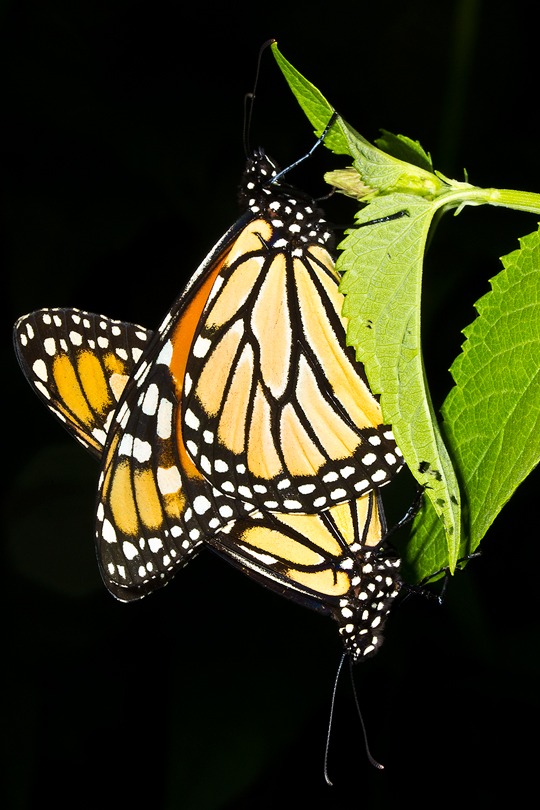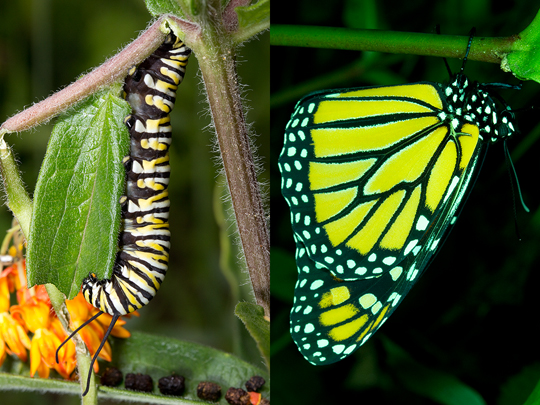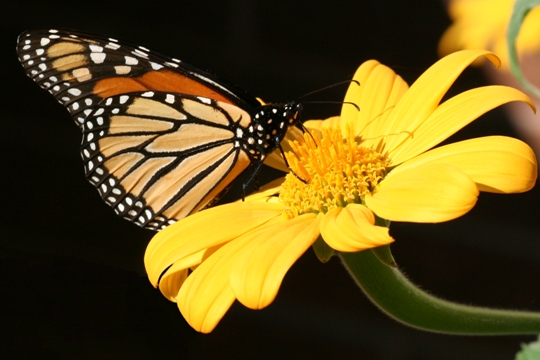Helping monarch butterflies
| |
 |
|
| |
Monarch butterflies goes through a several breeding cycles before arriving in Canada. In Canada, the mating will result in butterflies that must then find their own way to Mexico to overwinter. |
|
The decline in the migration of the monarch butterfly between Canada, the North East and Mexico has been well documented in recent years. Apart from signing petitions and contacting local politicians to let them know you care, there are several things you can do to help monarch butterflies on your own property. Even if you have a really small garden in an urban area, you can attract monarch butterflies.
| |
 |
|
| |
Caterpillars of the monarch butterfly grow by eating tender leaves and flowers of Asclepias, such as this butterfly weed. When the adult butterfly emerges from its chryalis, it pumps blood into the everted wings. After the wings are fully extended, the butterfly withdraws the blood to let the wings dry out and become a light aerofoil. Since the wing tissue dies in this process, it cannot be replaced through further moulting. |
|
| |
|
|
Monarch butterflies like all other insects need a place that is free of pesticides in which to feed. They need milkweed to complete their life-cycle and a range of flowers to sustain them with nectar throughout the summer and in the fall when they migrating to Mexico. Monarch butterflies eat most species of milkweed so you do not need to plant common milkweed which spreads around quite a lot. Swamp milkweed for clay soils and butterfly weed for dry soils are highly recommended as they are clumpers and not spreaders.
| |
 |
|
| |
Tithonia has large flowers that provide a suitable landing platform for Monarch butterflies. It is one of the annuals that Monarchs enjoy visiting. |
|
| |
|
|
Monarchs do not typically arrive in Ontario until June, so spring flowering plants are not particularly helpful to them. Put in plants that will flower throughout the summer and into early fall. Choose plants that are native and which are at least two feet high since they tend not to fly too close to the ground. Some annuals such as tithonia and verbena bonariensis as well as butterfly bush are attractive to Monarchs.
Useful links:
Journey North: Gives up to date information on the northwards Monarch migration.
Monarch watch: Gives a lot of information about Monarchs and the opportunity to take part in research.



